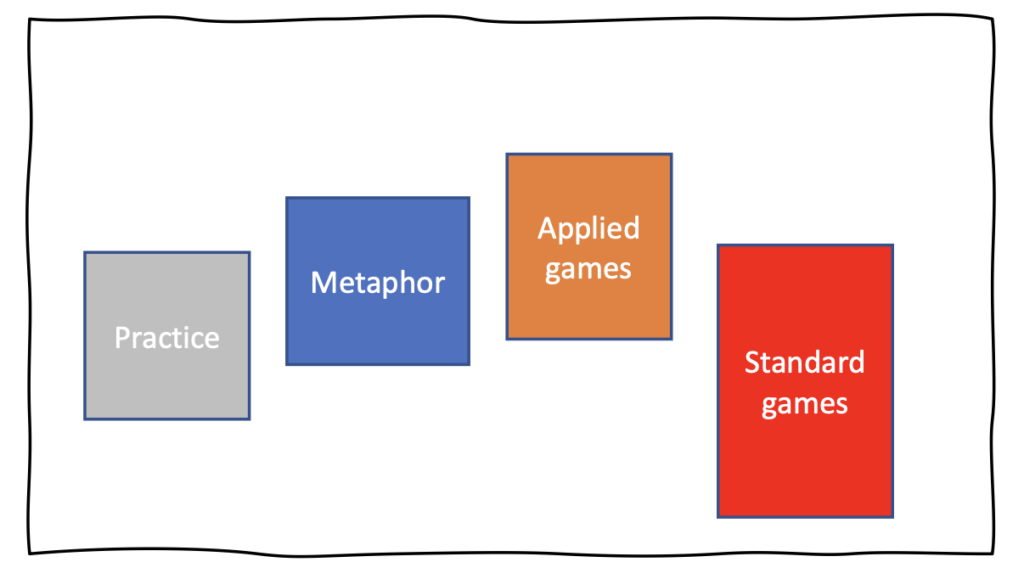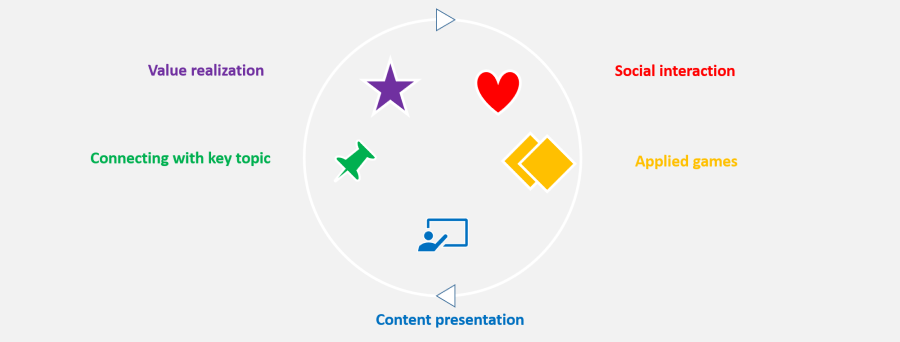The delivery process – CARTA Method
A good delivery process could be implemented by:
- clearly embracing responsibilities by the trainers
- paying attention to the activity types that generate engagement
- following an intentional training delivery flow
- creating a good learning environment
- constantly improved based on feedback.
Assuming responsibilities
You need to wear different “hats” to fulfil your role as a trainer.


Figure 3 – Trainer’s roles (CARTA Method)
Creating engagement strategies
To set up a course with a high degree of interactivity and practicality, remote training program creators will design activities that employ some of the approaches below:
- Ask participants to Do Something
- Create opportunities for them to Interact with others
- Stimulate Creating, Discovering, Exploring, and Making Connections
- Reserve time for Individual reflection
- Run Games or applied games
- Assign the role to Observing others
The four categories of practical activities that we recommend in CARTA are the following:
A. The simple practice of learned notions, concepts, and techniques
B. Using metaphors in practice (pretext, image, story, role-playing, case study, etc.)
C. Using applied games: several activities specific to known games are intertwined with the objective of a certain practical activity; integrating games in a practical activity intensifies the dynamism, interaction, and communication of the latter, and increases the level of energy associated with the kind of integrated game
D. Using standard games: they are useful to restore energy levels, engagement, connection, and communication within teams


Figure 4 – Levels of engagement by activity category (CARTA Method)
The learning space
To attain learning objectives, the stakeholders involved in the training process need to play their part.
- Participant – active involvement in knowledge acquisition and skills development
- Sponsor of the learning initiative – ensuring the right resources and enough time for training
- Trainer – pursue the principles of CARTA, apply delivery techniques, adapt content for online delivery
- Designer – i.e., the person who designs activities and arranges them in a learning flow that maximizes the value offered to the participants.
Delivery Flow
Online training needs more flexibility in terms of duration and sequence of content delivered. That’s why we lean toward a loop-based approach instead of the traditional content block approach.
The delivery process comprises three main phases:
- Session Opening
- Delivery
- Session Closing
The course delivery per se is to be made iteratively in delivery loops containing a set of essential activities. The creators of training material and the trainers themselves can organize the delivery sequence for each loop as they see fit. The presence or absence of such activities makes it possible to evaluate the training session’s effectiveness later.


Types of reusable activities
Those who deliver courses remotely need to be confident that the kinds of activities they employ will generally have the expected effect in terms of the emergence of a good learning environment, a smooth, stress-free interaction with the group, the attitudinal opening of the participants, the participants’ realization of the offered value and the upkeep of their energy levels.
The practice has demonstrated that the activities included in the table below are reusable, interchangeable, and highly adaptable—after minor adjustments—to a large range of courses, from Soft Skills to technical or specialist training.
Type of Activity | Why? | Comments & examples |
Connecting participants (among themselves and with the trainer) | This activity reduces stress, stimulates openness, and puts people in “learning mode” | Introducing oneself in pairs or individually, interviewing, collecting expectations |
Defining expectations and work rules | Participants are given the chance to express their expectations, while the session leader can clarify or confirm the possibility of the fulfillment of these expectations | Collecting ideas on a tablet or virtual board |
Relating to the main subject matter | A component of the first loop, this is the first learning activity | Brainstorming on contrasting topics |
Content delivery | This activity consists of the transfer of knowledge to participants, and usually is the main reason for setting up the course | In simplified/ minimal format, using 3-4 slides for each idea or message |
Game-like activities and debriefing | They support experiential learning | 4 types of activity |
Social interaction | It gives participants the chance to heighten the human factor within the group learning framework | |
Value realization | It stimulates the expression of perceptions, the evaluation of the experience gains, and the projection of scenarios for the future utilization of skills and knowledge | Personal rankings, the level of usefulness to office activity, the thermometer technique, the level of newness |
Table: Types of reusable activities